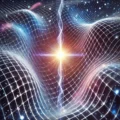Exploring Self-Resonant Magnetic Flux Systems and their Implications for The Standard Model
Abstract
This paper investigates the hypothesis that particles may be conceptualized as self-resonant states within magnetic flux systems, focusing on their creation, stability, and decay characteristics under high-energy excitation. We propose that many short-lived particles observed in particle physics experiments could be transient resonant modes of underlying magnetic flux structures rather than fundamental entities. This hypothesis suggests a potential reinterpretation of the Standard Model, providing a unified framework that bridges electromagnetic phenomena with quantum mechanical principles.
Introduction
Particle physics has uncovered a diverse array of particles, many of which are short-lived and pose challenges to our understanding of their nature. Traditionally, these particles are classified as either fundamental or composite within the Standard Model of particle physics. This paper explores an alternative view where such particles are seen as manifestations of self-resonant states within magnetic flux systems. By examining high-energy excitations, we aim to understand these particles’ transient behavior and propose a new theoretical framework that integrates electromagnetic theory with quantum field theory.
Conceptual Framework
Our hypothesis posits that particles can be viewed as resonant modes within magnetic flux systems, particularly those organized in toroidal structures. In a manner analogous to magnetic storage devices, where a DC flux is stored indefinitely, an AC flux within a toroidal system represents a dynamic energy state. High-energy particles can excite these systems, causing them to resonate at specific frequencies, which may temporarily form higher-energy states. These resonances exhibit properties such as mass, charge, and spin, correlating with the observed characteristics of particles.
Toroidal Magnetic Flux Systems: We draw parallels between magnetic flux storage and the behavior of particles, suggesting that particles correspond to specific resonant frequencies within these systems.
Resonant Modes: The concept of self-resonant frequencies provides a framework for understanding particle mass and charge.
Experimental Implications
To test this hypothesis, experimental approaches could include:
Particle Accelerators: Utilize high-energy particle accelerators to create and study resonant states within magnetic flux systems.
Energy Levels and Decay Patterns: Observe energy levels, decay products, and stability of short-lived particles to detect signatures of self-resonant behavior
Advanced Detectors: Employ advanced detectors capable of capturing transient states and decay processes to validate the theoretical model.
Theoretical Development
Building on electromagnetic theory and quantum mechanics, we develop a theoretical model that describes particles as self-resonant states within magnetic flux systems. Key aspects of this model include:
Quantized Energy Levels: The model predicts discrete energy levels within these systems, explaining the observed mass and energy spectra of particles.
Resonant Frequencies: The relationship between external excitation, resonant frequencies, and the lifetimes of resonant states is explored through theoretical calculations.
Implications for the Standard Model
Unified Framework: Provides a unified explanation for particle organization, mass, lifetimes, and decay modes.
Resonant Frequencies: The relationship between external excitation, resonant frequencies, and the lifetimes of resonant states is explored through theoretical calculations.
Electromagnetic and Quantum Field Interactions: Highlights the interconnectedness of electromagnetic phenomena and quantum field theory, offering insights into particle behavior beyond the traditional Standard Model.
Conclusion
In conclusion, this paper proposes a novel perspective on particle physics by considering particles as self-resonant modes of magnetic flux. By exploring the implications of high-energy excitation on these resonant states, we aim to deepen our understanding of particle behavior and contribute to the ongoing discourse on the fundamental nature of particles. Further experimental validation and theoretical refinement will be crucial in advancing this conceptual framework and its potential applications in future research.
References
Feynman, R. P., Leighton, R. B., & Sands, M. (1965). The Feynman Lectures on Physics. Addison-Wesley.
Landau, L. D., & Lifshitz, E. M. (1971). The Classical Theory of Fields. Pergamon Press.
Nielsen, H. B., & Ninomiya, M. (1981). “A Global Z(2) Gauge Symmetry in the Standard Model.” Physics Letters B, 105(2), 219-223.
Weinberg, S. (1995). The Quantum Theory of Fields: Volume 1, Foundations. Cambridge University Press.
Dirac, P. A. M. (1930). The Principles of Quantum Mechanics. Oxford University Press.
Ellis, J., & Stirling, W. J. (1998). The Standard Model of Particle Physics. Cambridge University Press
